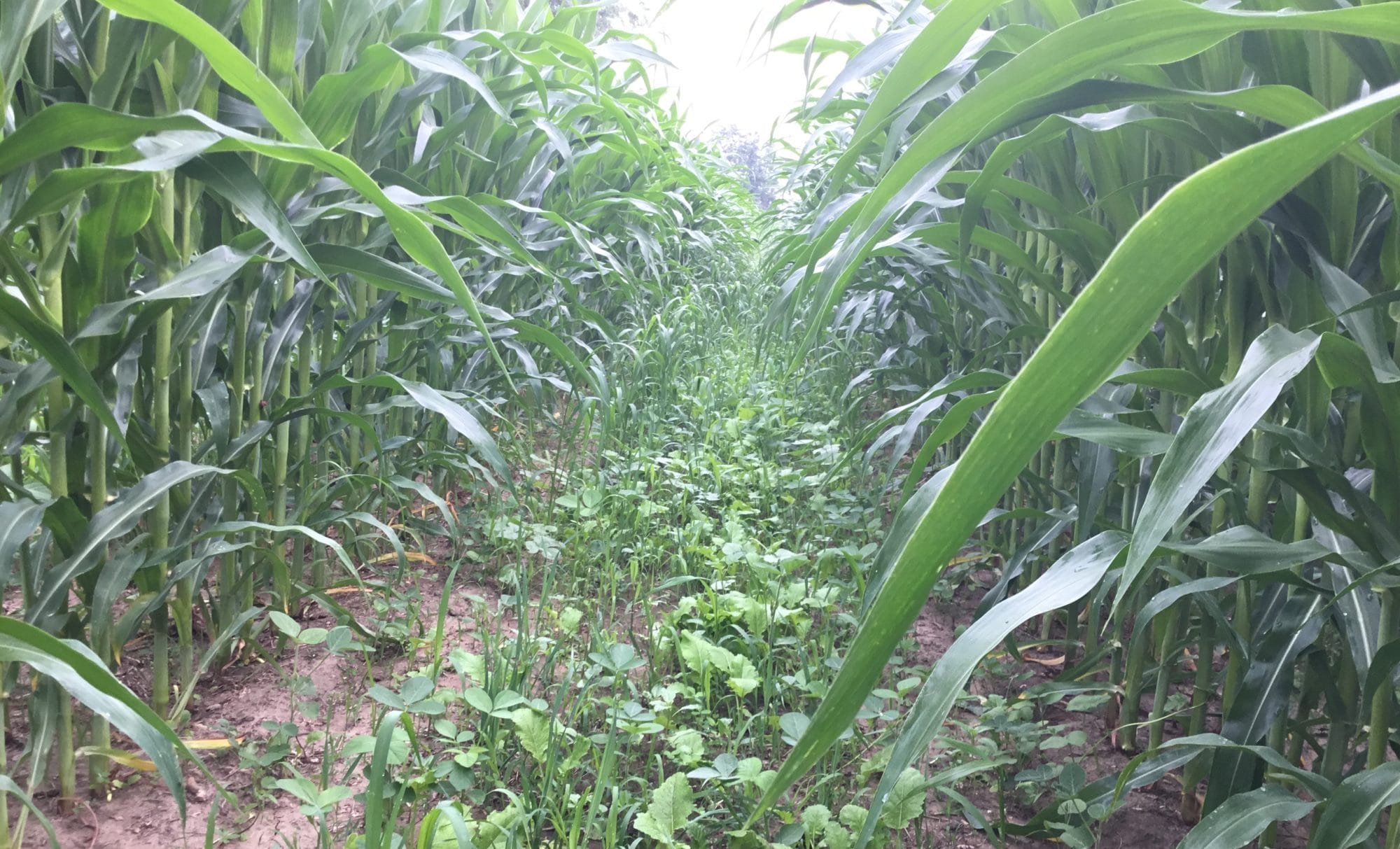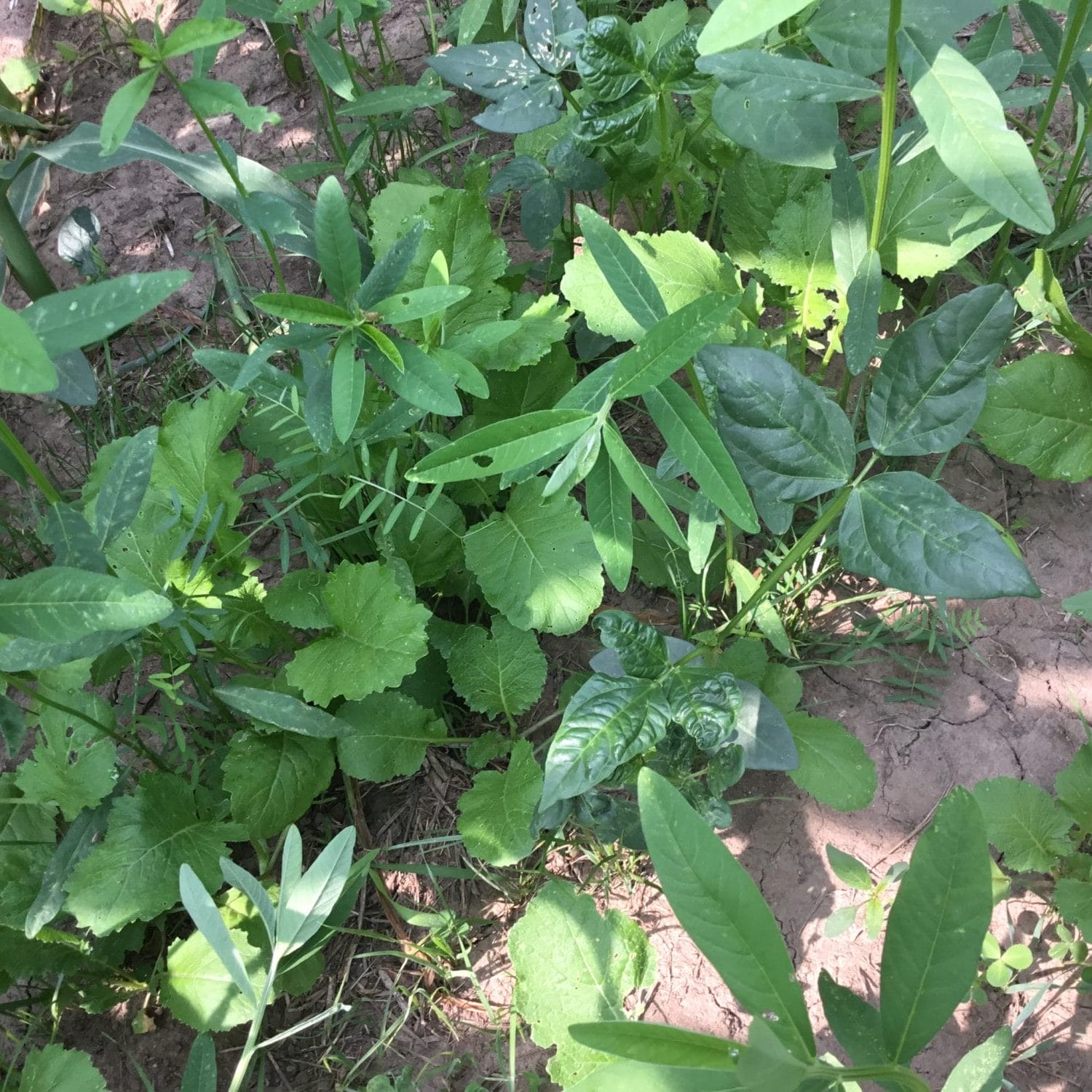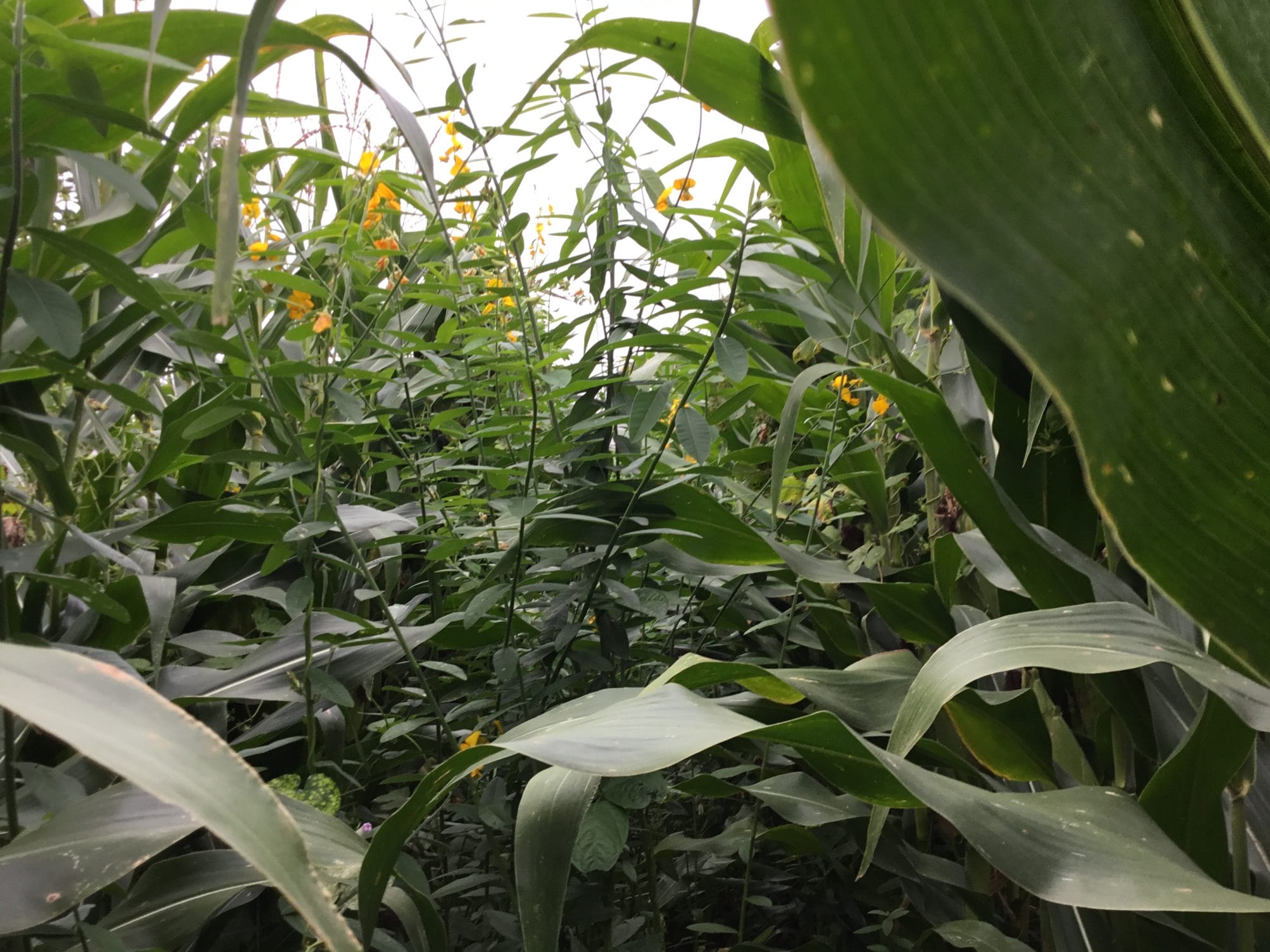Observations from a Trial Season of 60-inch Row Corn
Planting corn in rows 60 inches apart provides a unique opportunity for growing cover crops while simultaneously growing a cash crop. David Dedert of Quincy, Illinois, jumped on this opportunity in 2023 after learning about the practice from eastern Iowa farmers Bob Recker and Eric Miller.
David grows corn, soybeans, wheat and oats and raises a beef cow and calf herd and some sheep on his farm. Sixty-inch corn caught his interest because of its economic potential. “I liked the idea of being able to raise a decent stand of corn crop and then also be able to graze the cover crops in the fall afterward,” he says.

Double the width of a normal corn row spacing, 60-inch rows provide ample space for cover crops to root and grow while corn is still in the field.
Planting Season
Prior to planting in 2023, David made two vertical tillage passes on all his fields to level the ground and take out the first round of weeds, a practice that he does not plan to continue doing down the line due to its negative impact on soil health. He planted his 30-inch row corn in mid-April and six weeks later, around the last week of May, planted 60-inch corn across 85 acres in six fields. “The 60-inch row corn only went where I am able to graze,” he says.
Using a custom-built planter with Kinze row units, David planted either Dekalb 62-70 or Pioneer 1222 (both used, but in different fields) in two “twin” rows of corn eight inches apart from each other with the 60-inch spacing between each pair of rows. His planting population was 35,000.
To fertilize, he applied 300 lbs urea, 200 lbs 18-46-0 DAP and 100 lbs 0-0-60 potash. Though initially planning to disc dry fertilizer four inches away from and in between each corn row, David instead used a fertilizer buggy just ahead of cover crop planting due to some technical issues.

David’s cover crop mix included annual rye grass, hairy vetch, cow peas, winter peas, sunn hemp, medium red clover and purple top turnips.
That fertilizer was then worked into the soil when David drilled cover crop seed on June 15 and 16, 2023. His mix from local Camp Point Seed Co. included annual rye grass, hairy vetch, cow peas, winter peas and sun hemp in the large box on the drill and medium red clover with purple top turnips in the small seed box. The legumes in this mix helped to fix nitrogen and the turnips provided excellent grazing for his cattle.
Harvest Comparisons
Though some of the corn around the field edges suffered from wildlife damage and lack of moisture due to neighboring trees, David was surprised to find that in the middle of his fields, the 60-inch row corn yielded comparably to his 30-inch row corn, despite being planted six weeks later.
Harvest of all his corn took place between the third week of November and December 6. The 60-inch row corn yielded from 138 to 174 bu/ac and the 30-inch row corn yielded from 135 to 256 bu/ac. The latter did not face the same issues with field edges as the corn with wider spacing.
David immediately hauled all his harvested corn to the local grain elevator to get the correct production bushels for each field. The germination rate was 94.3%, though one of his fields didn’t germinate until the first of July.
Cover Crops and Grazing
David’s cover crop stand quality varied throughout the season and across different fields. Early in the growing season, he observed that the cover crop mix was establishing well, but due to dry conditions and lack of sunlight from tall corn stalks, the cover was stunted later in the season. Despite that, David says, “I enjoyed seeing the cover crops come up and watching the sunn hemp bloom. I had ten-foot-tall sunn hemp and it was really fun to see all the yellow flowers out there.”
David has been growing and grazing cover crops for two decades, so like clockwork, he sets up an electric fence and cattle are turned out following his corn harvest.
This last fall, David promptly turned 20 head of cattle out onto the fields at one of his farms to graze the corn stalks and cover crops. A couple of weeks later, he turned out another 50 head on another farm, implementing both rotational and continuous grazing depending on the field.
Planning for the Next Season
As the 2024 season is in full swing, David is choosing to plant 60-inch row corn again, simply moving the rows over 30 inches. He will plant around Mother’s Day, a bit earlier than in 2023, and is planning to use a variety that won’t get so tall that it shades out all the cover crop species.
David is grateful he has the opportunity to try new farming practices even on rented farmland. “I’ve got three landlords that are interested in regenerative agriculture, so that helps a lot when I’m looking to give new practices a try.”
Additional Resources
- 2021 research report: Planting Corn in 60-in. Row-Widths for Interseeding Cover Crops
- 2021 webinar: Interseeding 60-Inch Corn for Improved ROI
- 2020 virtual field day: Using Conservation to Improve Farm Profitability – 60-Inch-Row Corn + Interseeded Cover Crops

